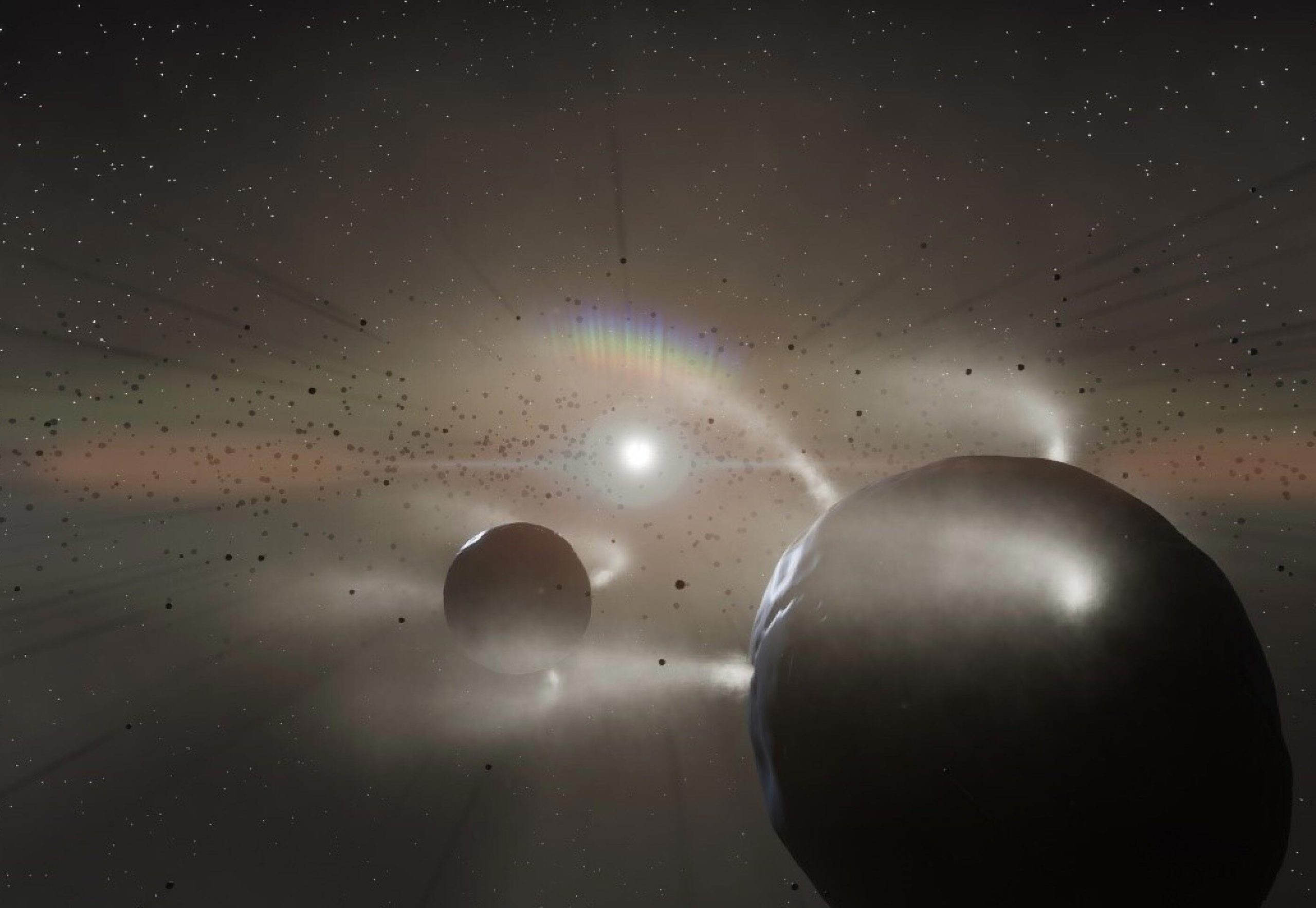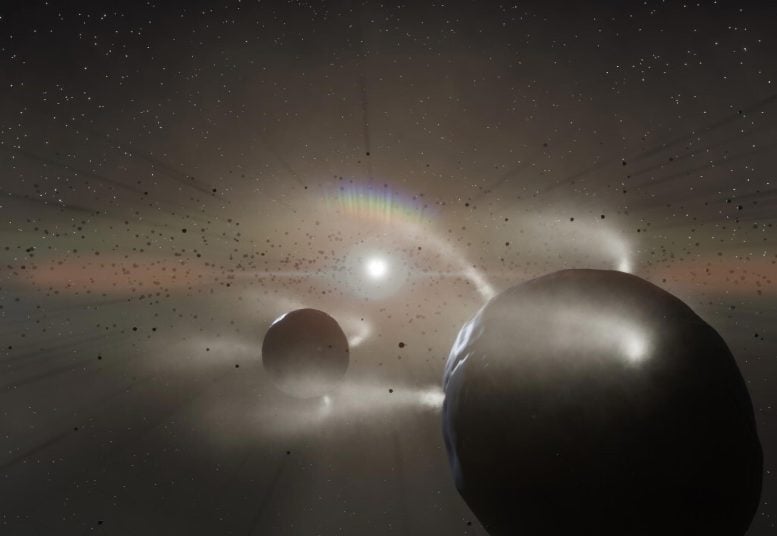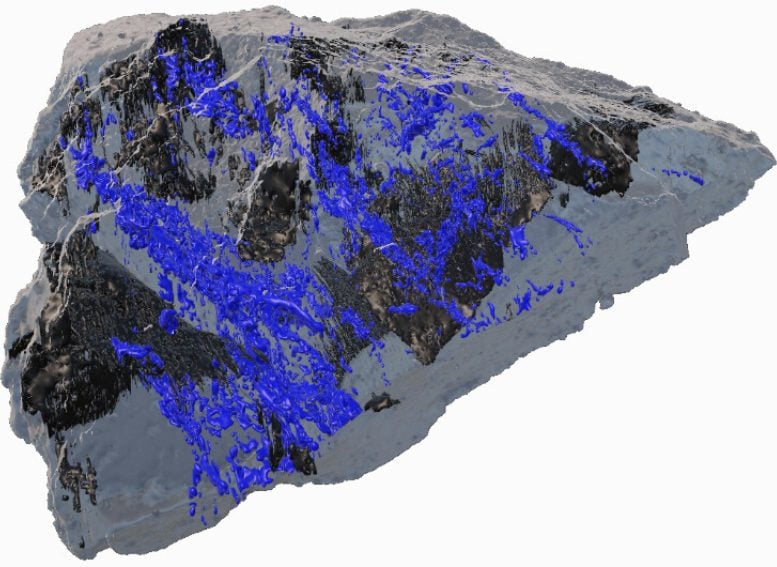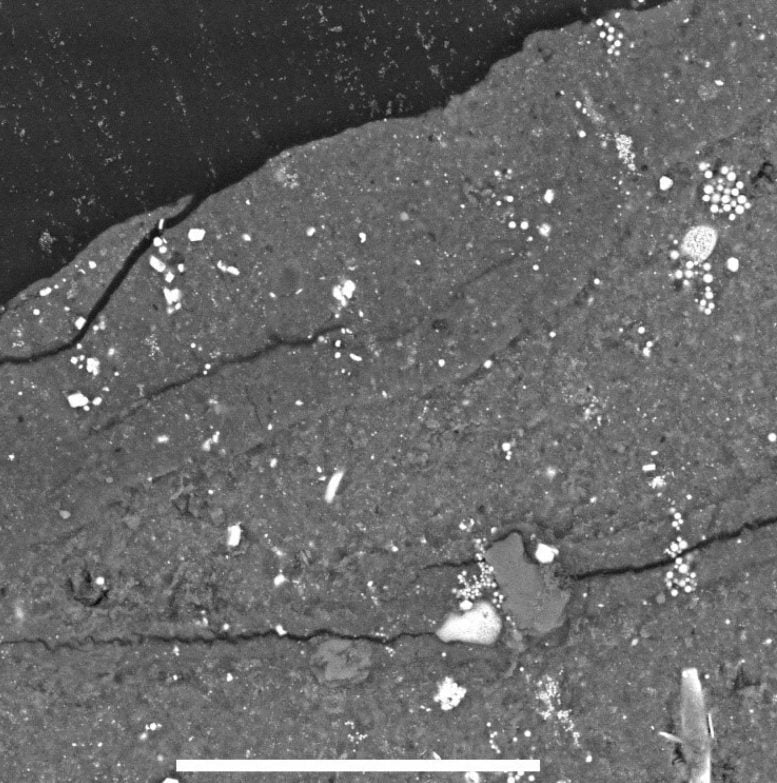

Ice on ancient asteroids like Ryugu may have been crucial in kickstarting life on Earth.
Researchers from Imperial and collaborators analyzed asteroid rocks and discovered fractures caused by freeze-thaw cycles. These processes likely enabled water and essential organic materials to be delivered to our planet, providing the necessary building blocks for life to emerge billions of years ago.
The Role of Water in Asteroid Evolution
The study, led by Dr. Matt Genge from Imperial’s Department of Earth Science and Engineering with collaborators at the Natural History Museum, the University of Kent, and the Japanese Space Agency (JAXA). It indicates that rocks from asteroid Ryugu, returned to Earth by JAXA’s Hayabusa2 mission, show evidence of having been fractured by ice.
The research team found that these fractures were filled with clay and sulfide minerals, which formed in the presence of water. These mineral-filled cracks appear to have been created by a freeze-thaw process, where ice expands and contracts as it melts and refreezes, causing the rock to break apart.
This suggests that water played a crucial role in altering the asteroid’s composition in the early Solar System. Scientists believe that these changes may have enabled the delivery of essential organic materials, along with clay, sulfide minerals, and water, to Earth when the asteroid impacted our planet billions of years ago. This delivery could have been a key factor in the emergence of life on Earth.

How Freeze-Thaw Cycles Led to Life on Earth
Dr. Genge said: “Our findings suggest that the repeated melting and freezing of ice on asteroids may have helped life form on Earth.
“Our calculations indicate that the pressure exerted by ice as it grows is sufficient to fracture asteroids to their core, allowing water to spread throughout them. Water then interacts with the minerals inside the asteroid to create essential organic matter – which would have been delivered to early Earth generating the oceans and the organic building blocks of life.”
While collisions with other asteroids can also fracture asteroids, the team concluded that the specific shapes of the fractures on the Ryugu asteroid could only have been formed by the freeze-thaw process.
These freeze-thaw cycles not only fractured Ryugu, but also allowed water to escape through these fractures creating geysers on the asteroid’s surface.
The paper is published in Nature Astronomy.

Deciphering Ryugu’s Tiny Fractures
The team carried out their research on a millimeter-sized piece of Ryugu brought back to Earth by JAXA. To analyze the sample, they used X-ray Computed Tomography (XCT), which is similar to a medical CT scan but for rocks – allowing them to see the 3D shapes of the fractures on the asteroid.
As well as the thin fractures which pointed to the role of the ice creating the fractures on the asteroid, researchers also found ‘veins’ containing framboidal magnetite—tiny, spherical crystals of magnetic iron oxide – which represent further evidence of the presence of water.
Researchers noticed that the fractures and veins had strange curved shapes and appeared as a series of cusps. It was the distinctive shape of the veins that helped them understand the role of ice: the team performed experiments on ice grains embedded within clay and found similar cusp-like fractures forming around the ice grains.
“It is the fracturing of asteroids by freeze-thaw that ensured asteroids were thoroughly altered by water. Without it, these life-giving materials may have been much rarer. The cosmic game of ‘Rock, Scissors, Ice’ may well be an essential part of how life came to be,” concluded Dr. Genge.
Reference: “Evidence from 162173 Ryugu for the influence of freeze-thaw on the hydration of asteroids” by Matthew J. Genge, Natasha V. Almeida, Matthias van Ginneken, Lewis Pinault, Penelope J. Wozniakiewicz and Hajime Yano, 26 September 2024, Nature Astronomy.
DOI: 10.1038/s41550-024-02369-7